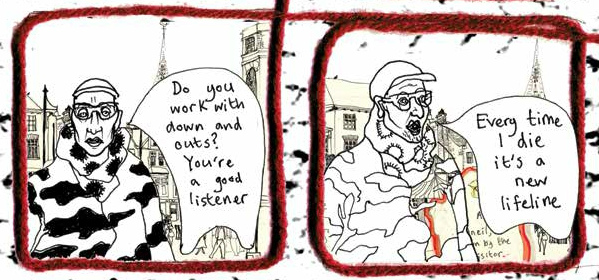 The self-published work of graphic memoirist and Myriad First Graphic Novel Competition shortlisted creator Wallis Eates has featured here in ‘Small Pressganged’ a number of times this year. Her zines Fleeting Faces and You Chew I Spew have both been reviewed in this column and earlier in the year I spoke to Eates about her distinctive style of autobio comics and her work with memories in a comprehensive two-part interview here.
The self-published work of graphic memoirist and Myriad First Graphic Novel Competition shortlisted creator Wallis Eates has featured here in ‘Small Pressganged’ a number of times this year. Her zines Fleeting Faces and You Chew I Spew have both been reviewed in this column and earlier in the year I spoke to Eates about her distinctive style of autobio comics and her work with memories in a comprehensive two-part interview here.
In May of this year Wallis was afforded the opportunity to become the Artist-in-Residence at the Quadrant Arcade in the Essex market town of Romford in Greater London. Her approach to this residency resulted in the publication The Magic Quadrant (reviewed here at Broken Frontier) which recorded memories and anecdotes from local people in comics form. Today, in the first of two guest blogs about community arts-based comics projects, Wallis Eates talks about using the medium to communicate experience and connect with participants, and the logistics involved…
***
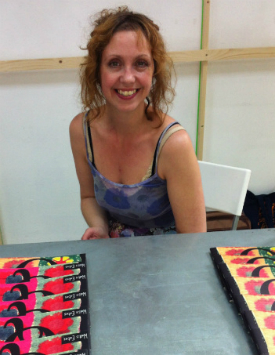 In May and June of this year, I was fortunate enough to be involved in two consecutive community arts projects and I snapped up both opportunities to engage participants in the medium of comics…
In May and June of this year, I was fortunate enough to be involved in two consecutive community arts projects and I snapped up both opportunities to engage participants in the medium of comics…
ROMFORD RESIDENCY
The first project was as Artist-in-Residence in The Quadrant Arcade, a shopping centre in Romford, Essex. Funded by the Romford Community Arts Programme, the aim was to give the town an arts makeover, challenging preconceptions about it and bringing more business to the arcade. I was allocated one month and a studio space to apply my discipline and engage the community.
My idea was to collate anecdotal stories from the shopkeepers, customers and other town residents and present them in comics format. With enough stories, I could portray a range of human experience to make a book full of varied content that reaches beyond Essex stereotyping. I also thought it would be of interest for locals to see themselves, people or places they knew, represented in a way that was accessible and engaging.
My initial aim was to follow the same approach I had used when I did my You Chew I Spew page [one example reviewed here at Broken Frontier] on my Tumblr (later produced in zine format), whereby friends would send me written accounts of memories. I liked working this way as it gave me time to absorb the story, put myself in their shoes, and work out why it was a pertinent memory to them, all with the safety of referring to their written word. So, I wanted people to send me stories. However, aware that this could be quite limiting, I was also happy to offer interviews for anyone that would prefer face to face. I had already volunteered as an interviewer for an oral history project earlier in the year and had undergone training, so I felt fairly confident. The only challenge now was to rouse interest…
IT WAS REALLY HARD! The first week I had flu, and only three people turned up to the staff meeting in The Quadrant, where I was going to brief everybody about what I was looking for, assuming they were all willing to participate. This meant I then had to go round and introduce myself to the rest of the shopkeepers while they were busy at work. It was pretty excruciating when some faces went from happy belief that I was a customer, to realisation and polite disinterest when it turned out I was an artist with this really vague requirement of a ‘memory’ for a ‘book’. Still, some agreed to having a think about something, and I said I’d pop back in a few days and gave them my email in case they would like to write it down. And a link to my website for examples of what other people had sent me. And a print-out of one too.
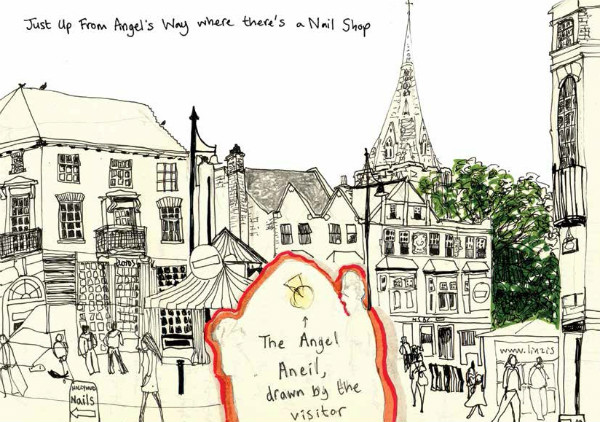 One email came (joy of joys!), but revisits were invariably met with ‘I haven’t had time,’ or even, ‘I don’t have any memories.’ One person justified not having any memories because they’ve only worked there for ‘ten years’. I said it didn’t have to be a memory based at work, and they smiled as I took up space in their shop with my stupid arty jacket on.
One email came (joy of joys!), but revisits were invariably met with ‘I haven’t had time,’ or even, ‘I don’t have any memories.’ One person justified not having any memories because they’ve only worked there for ‘ten years’. I said it didn’t have to be a memory based at work, and they smiled as I took up space in their shop with my stupid arty jacket on.
I had to persevere, and something had to give if I was to make a book full of stories! I took a trip to the library and found out what social groups they host. One in particular sparked my interest, the ‘In Stitches’ knitting and crochet group. So, I went along one Wednesday morning and was delighted with the warm welcome I received. It also meant I had to really change my approach as this was all about the talking – no email, and no-one was particularly keen to be recorded either. Not exactly interviewing either, I just had to let my hand scribble away as I engaged in conversation – and thus gave birth to a new skill.
What was exciting about this was that it forced me to think on my feet, and even as it was happening, I was making creative connections between anecdotes, forging themes and visualising. Sometimes I had to put down my pen for the sake of politeness, or because my writing was too slow and I was behind now anyway, and so I just had to make an effort to remember. As such, it was a fully immersive experience and afterward I was able to pour out so many ideas that I would never have had had I not actively engaged with the women in the group en masse.
This marked a change, and soon things became really interesting. As I gained the confidence to just be present, so I was able to absorb what was around me and capture Romford as I saw it. One particular highlight was one Friday as I relaxed outside a café with a tea and Bakewell tart to draw the market centre. On this one day I made so many connections with people, it would have been enough to fill a book alone – but not only that, each connection was very different, a unique combination of me and them that allowed for a rich variety of interpretation to go into my book.
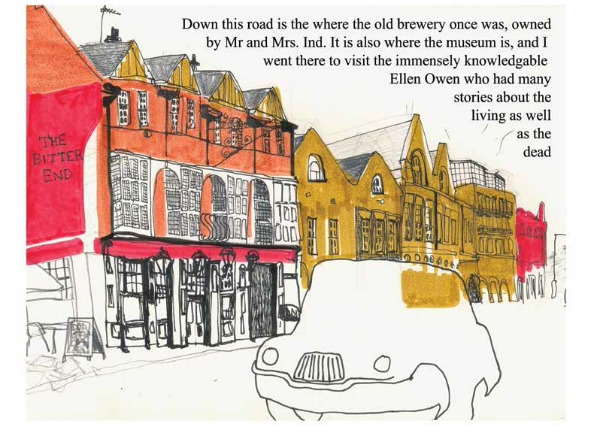 As the month came to a close, I had collaborated with the museum, the library and an education support group. It was now time to return to the shopkeepers with my newfound confidence and approach. It worked out really well, as I simply had conversations and found that I could certainly glean enough narrative thread to make fairly cohesive stories. In addition to this, a couple of the staff, having had the time, actually did send me their stories via email. I came to appreciate both methods of approach as they each connect you to your subject in different ways, perhaps allowing for different personality types to express their voice in the way that feels most comfortable to them. After all, that’s why I do comics.
As the month came to a close, I had collaborated with the museum, the library and an education support group. It was now time to return to the shopkeepers with my newfound confidence and approach. It worked out really well, as I simply had conversations and found that I could certainly glean enough narrative thread to make fairly cohesive stories. In addition to this, a couple of the staff, having had the time, actually did send me their stories via email. I came to appreciate both methods of approach as they each connect you to your subject in different ways, perhaps allowing for different personality types to express their voice in the way that feels most comfortable to them. After all, that’s why I do comics.
Tomorrow in her next exclusive guest blog at Broken Frontier, Wallis will be talking about her second project – bringing international communities together through the medium of comics.
For more on Wallis Eates visit her site here and follow her on Twitter here. You can buy copies of The Magic Quadrant here priced £4.00 as well as her other zines and comics.
For regular updates on all things small press follow Andy Oliver on Twitter here.





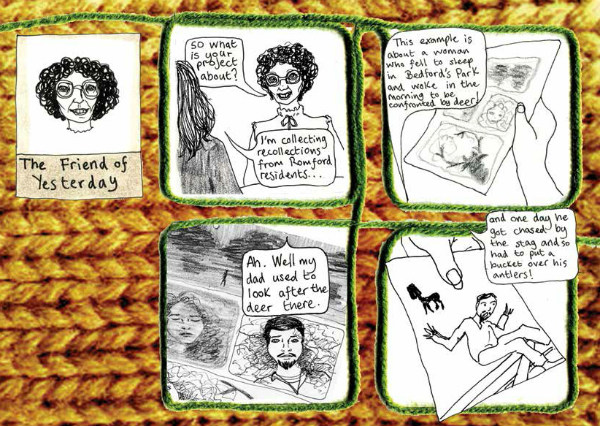
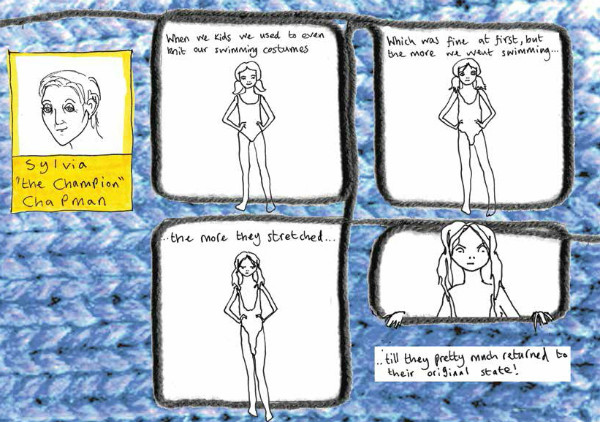
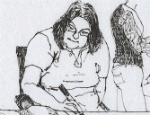
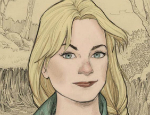

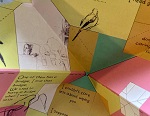
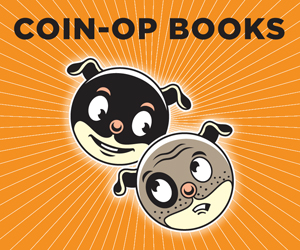





So interesting to hear more about the project Wallis and am looking forward to reading more in Part 2! Thanks Andy for interviewing one of my favourite creartors!